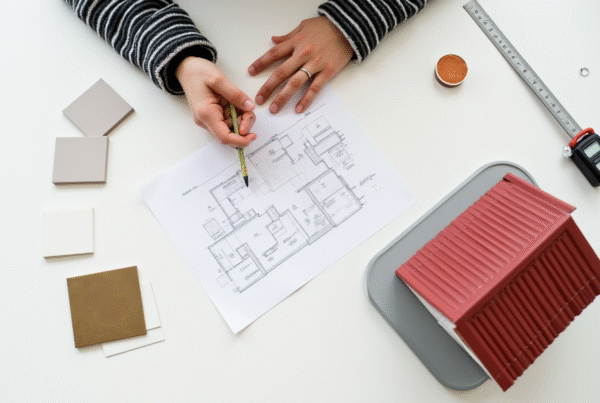Effective property management hinges on maintaining high-quality, efficient, and cost-effective maintenance services. By tracking key maintenance metrics, property managers can identify inefficiencies, optimize vendor performance, and enhance tenant satisfaction. Without data-driven insights, it’s nearly impossible to pinpoint what’s working—or what needs improvement. Monitoring metrics like response times, resolution rates, and costs can lead to fewer surprises, happier tenants, stronger vendor relationships, and a healthier bottom line.
Here are the top 10 maintenance metrics every property manager should track to elevate performance and ensure long-term success.
1. Average Response Time to Maintenance Requests
This metric measures how quickly your team acknowledges a tenant’s maintenance request. A prompt response, even if the repair takes time, reassures tenants and reduces frustration. It signals that their concerns are being prioritized.
Benchmarks to aim for:
-
Under 4 hours: Excellent response time
-
Under 24 hours: Acceptable response time
-
Over 24 hours: Risks tenant dissatisfaction
2. Time to Resolution (TTR) or Average Completion Time
TTR tracks the time from when a maintenance request is submitted to when it’s fully resolved. Faster resolutions keep tenants satisfied and prevent escalations, while prolonged delays can lead to complaints or further damage.
Benchmarks to aim for:
-
Under 24 hours: Ideal for emergencies
-
1–3 days: Suitable for non-urgent issues
-
4+ days: Risks tenant dissatisfaction and potential property damage
3. First-Time Fix Rate
This metric calculates the percentage of maintenance issues resolved on the first visit. For example, if 80 out of 100 requests are resolved without follow-up visits, your first-time fix rate is 80%. A high rate reflects efficient workflows, skilled technicians, and proper inventory management, saving time and costs.
Benchmarks to aim for:
-
Above 80%: Excellent
-
50–79%: Acceptable
-
Below 50%: Indicates inefficiencies or bottlenecks
4. Work Order Volume by Property or Unit
Tracking the number of work orders per property or unit helps identify high-maintenance properties. For instance, a property generating 12 work orders per month versus one with 5 may indicate underlying issues like deferred maintenance or aging infrastructure.
Key insight: Lower work order volumes are ideal, but this varies by property type, age, and condition. Proactive preventative maintenance can reduce reactive work orders.
5. Tenant Satisfaction Score (Post-Maintenance Surveys)
Collecting tenant feedback after repairs, typically on a 1–5 scale with comments, provides insight into the quality of service. High scores indicate responsive and thorough service, while low scores may reveal issues like poor communication or messy job sites.
Benchmarks to aim for:
-
90%+: Tenants are highly satisfied
-
70–89%: Generally satisfied
-
Below 70%: Needs improvement
6. Technician Productivity and Workload Balance
This metric tracks the number of jobs completed per technician over a week or month. Balanced workloads prevent burnout for high performers and ensure underperformers are addressed. Optimal job volume depends on task complexity, but uneven workloads signal a need for adjustments.
Key insight: Monitor for extremes—overworked or underutilized technicians—to maintain efficiency.
7. Maintenance Cost per Unit or Property
Tracking average maintenance costs per unit or property helps forecast expenses and spot cost spikes that may indicate larger issues, like system failures. A general rule is to budget 1% of a property’s value annually for maintenance (e.g., $5,000 for a $500,000 property).
Benchmarks to aim for:
-
Below 1%: Efficient cost management
-
At 1%: Standard
-
Above 1%: Investigate for inefficiencies or major issues
8. Recurring Issue Rate
This measures how often maintenance issues reoccur within 30–90 days after resolution. For example, if 2 out of 20 repairs fail within a month, the recurring issue rate is 10%. High rates may point to poor workmanship or misdiagnosed problems.
Benchmarks to aim for:
-
Below 10%: Ideal
-
10–20%: May indicate issues with diagnosis or quality
-
Above 20%: Consider follow-up inspections or new vendors
9. Vendor Performance Score
Assign vendors a score (e.g., 1–10) based on timeliness, cost, and work quality. This helps ensure accountability and informs decisions about retaining or replacing vendors. A simple scoring system can drive consistent service improvements.
Benchmarks to aim for:
-
9–10: Exceptional performance
-
7–8: Good performance
-
Below 7: Consider renegotiating or replacing vendors
10. Preventive vs. Reactive Maintenance Ratio
This ratio compares scheduled preventative maintenance tasks to unplanned reactive work orders. A higher preventative ratio reduces costly emergencies and extends property lifespan. Use property management software to schedule recurring tasks and maintain a proactive approach.
Benchmarks to aim for:
-
60:40 or higher (preventative to reactive): Strong maintenance strategy
-
Below 60:40: Shift toward more preventative measures to cut long-term costs
Conclusion
Tracking these 10 maintenance metrics empowers property managers to make data-driven decisions, optimize operations, and enhance tenant experiences. By staying proactive and monitoring performance, you can reduce costs, improve vendor efficiency, and maintain properties that keep tenants happy and your bottom line strong. Start implementing these metrics today to transform your maintenance strategy!


